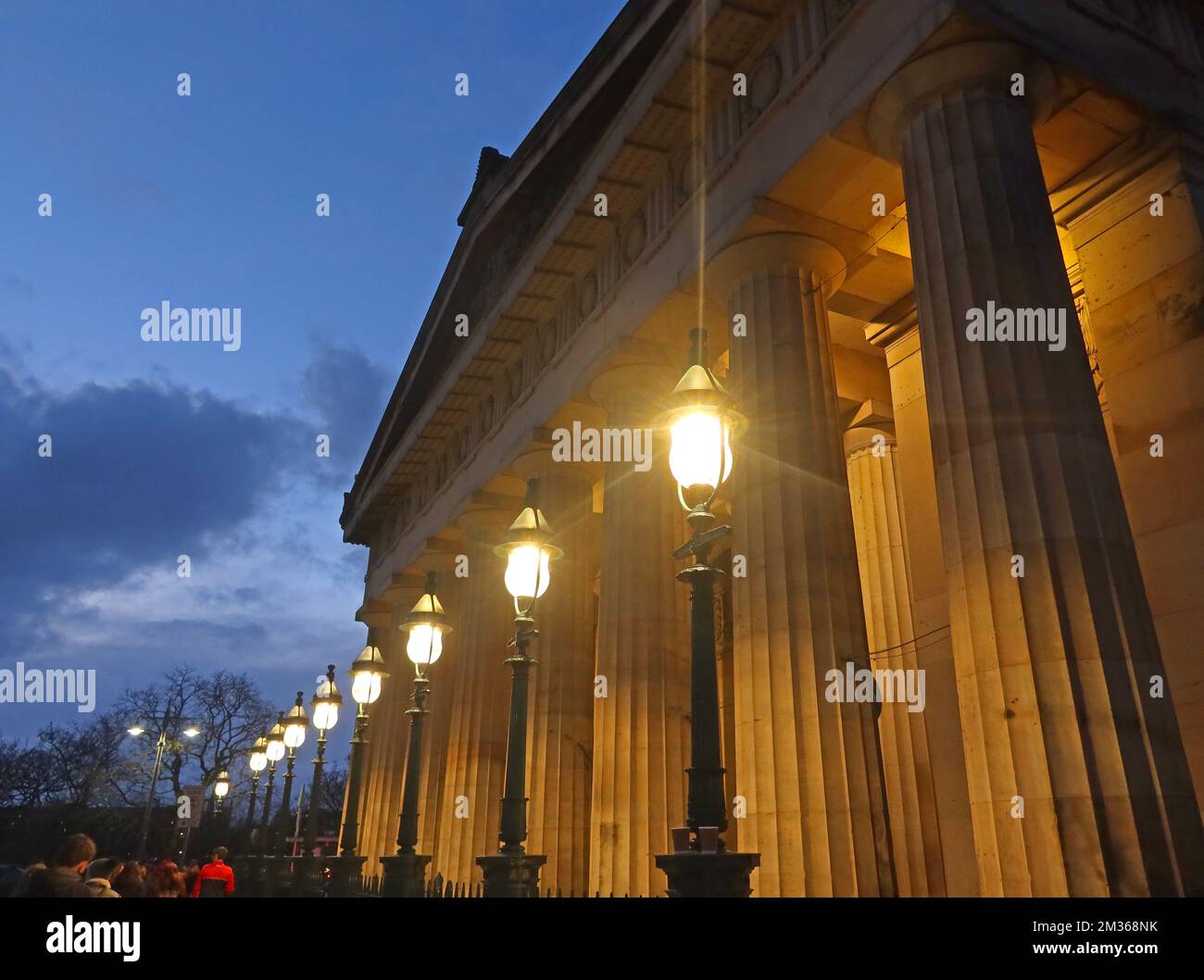Greek classic columns outside the national gallery of Scotland, off the Mound, Edinburgh at dusk, The Mound, Edinburgh, Scotland, UK, EH2 2EL

Image details
Contributor:
Tony Smith / Alamy Stock PhotoImage ID:
2M368NKFile size:
51.1 MB (1.3 MB Compressed download)Releases:
Model - no | Property - noDo I need a release?Dimensions:
4896 x 3648 px | 41.5 x 30.9 cm | 16.3 x 12.2 inches | 300dpiDate taken:
27 November 2022Location:
The Mound, Edinburgh, Scotland, UK, EH2 2ELMore information:
The Scottish National Gallery (formerly the National Gallery of Scotland) is the national art gallery of Scotland. It is located on The Mound in central Edinburgh, close to Princes Street. The building was designed in a neoclassical style by William Henry Playfair, and first opened to the public in 1859. The gallery houses Scotland's national collection of fine art, spanning Scottish and international art from the beginning of the Renaissance up to the start of the 20th century. The origins of Scotland's national collection lie with the Royal Institution for the Encouragement of the Fine Arts in Scotland, founded in 1819. It began to acquire paintings, and in 1828 the Royal Institution building opened on The Mound. In 1826, the Scottish Academy was founded by a group of artists who, dissatisfied with its policies, seceded from the Royal Institution, and in 1838 it became the Royal Scottish Academy (RSA). A key aim of the RSA was the founding of a national collection. It began to build up a collection and from 1835 rented exhibition space within the Royal Institution building In the 1840s, plans were put in place for a new building to house the RSA. The noted Scottish architect William Henry Playfair was commissioned to prepare designs, and on 30 August 1850, Prince Albert laid the foundation stone. The building was originally divided along the middle, with the east half housing the exhibition galleries of the RSA, and the western half containing the new National Gallery of Scotland, [4] formed from the collection of the Royal Institution. In 1912 the RSA moved into the Royal Institution building, which remains known as the Royal Scottish Academy Building. When it re-opened, the gallery concentrated on building its permanent collection of Scottish and European art for the nation of Scotland. William Playfair's building—like its neighbour, the Royal Scottish Academy—was designed in the form of an Ancient Greek temple. While Playfair designed the RSA in the Doric or